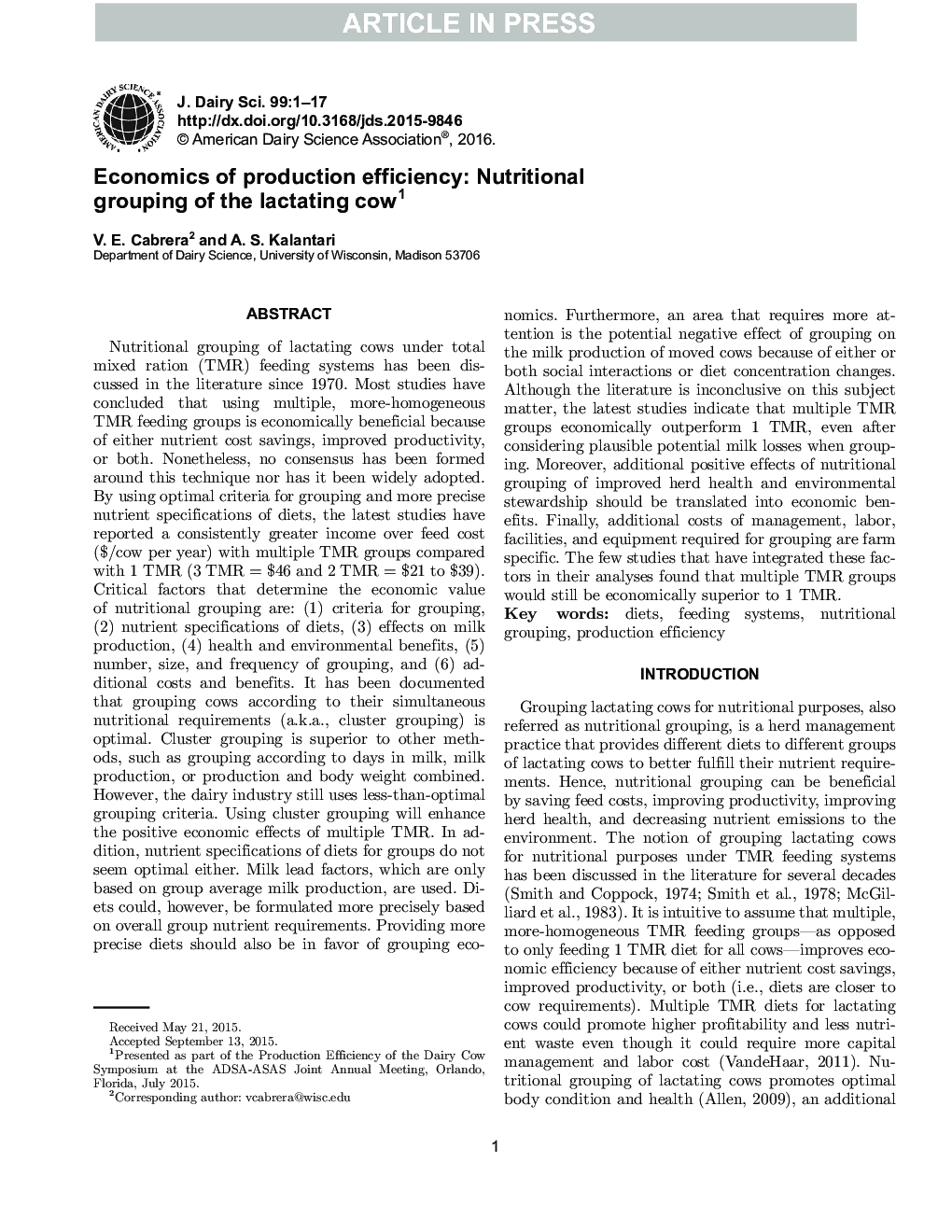| کد مقاله | کد نشریه | سال انتشار | مقاله انگلیسی | نسخه تمام متن |
|---|---|---|---|---|
| 10974076 | 1108021 | 2016 | 17 صفحه PDF | دانلود رایگان |
عنوان انگلیسی مقاله ISI
Economics of production efficiency: Nutritional grouping of the lactating cow1
ترجمه فارسی عنوان
اقتصاد بازدهی تولید: گروه بندی تغذیه ای شیر گاو شیرده 1
دانلود مقاله + سفارش ترجمه
دانلود مقاله ISI انگلیسی
رایگان برای ایرانیان
کلمات کلیدی
رژیم های غذایی، سیستم تغذیه، گروه بندی تغذیه، بهره وری تولید،
موضوعات مرتبط
علوم زیستی و بیوفناوری
علوم کشاورزی و بیولوژیک
علوم دامی و جانورشناسی
چکیده انگلیسی
Nutritional grouping of lactating cows under total mixed ration (TMR) feeding systems has been discussed in the literature since 1970. Most studies have concluded that using multiple, more-homogeneous TMR feeding groups is economically beneficial because of either nutrient cost savings, improved productivity, or both. Nonetheless, no consensus has been formed around this technique nor has it been widely adopted. By using optimal criteria for grouping and more precise nutrient specifications of diets, the latest studies have reported a consistently greater income over feed cost ($/cow per year) with multiple TMR groups compared with 1 TMR (3 TMRÂ =Â $46 and 2 TMRÂ =Â $21 to $39). Critical factors that determine the economic value of nutritional grouping are: (1) criteria for grouping, (2) nutrient specifications of diets, (3) effects on milk production, (4) health and environmental benefits, (5) number, size, and frequency of grouping, and (6) additional costs and benefits. It has been documented that grouping cows according to their simultaneous nutritional requirements (a.k.a., cluster grouping) is optimal. Cluster grouping is superior to other methods, such as grouping according to days in milk, milk production, or production and body weight combined. However, the dairy industry still uses less-than-optimal grouping criteria. Using cluster grouping will enhance the positive economic effects of multiple TMR. In addition, nutrient specifications of diets for groups do not seem optimal either. Milk lead factors, which are only based on group average milk production, are used. Diets could, however, be formulated more precisely based on overall group nutrient requirements. Providing more precise diets should also be in favor of grouping economics. Furthermore, an area that requires more attention is the potential negative effect of grouping on the milk production of moved cows because of either or both social interactions or diet concentration changes. Although the literature is inconclusive on this subject matter, the latest studies indicate that multiple TMR groups economically outperform 1 TMR, even after considering plausible potential milk losses when grouping. Moreover, additional positive effects of nutritional grouping of improved herd health and environmental stewardship should be translated into economic benefits. Finally, additional costs of management, labor, facilities, and equipment required for grouping are farm specific. The few studies that have integrated these factors in their analyses found that multiple TMR groups would still be economically superior to 1 TMR.
ناشر
Database: Elsevier - ScienceDirect (ساینس دایرکت)
Journal: Journal of Dairy Science - Volume 99, Issue 1, January 2016, Pages 825-841
Journal: Journal of Dairy Science - Volume 99, Issue 1, January 2016, Pages 825-841
نویسندگان
V.E. Cabrera, A.S. Kalantari,
